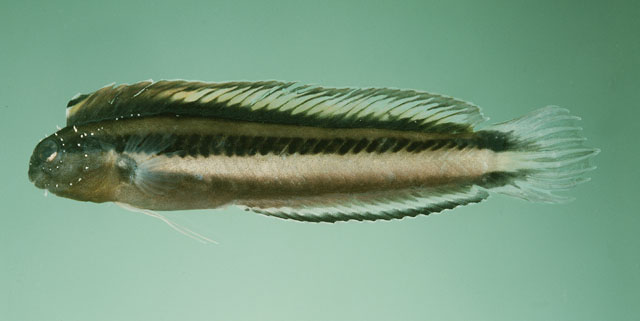| Blenniidae (Combtooth blennies), subfamily: Blenniinae |
| 7.2 cm SL (male/unsexed) |
|
demersal; freshwater; brackish; marine; depth range 0 - 10 m, amphidromous |
| Asia and Oceania: Indonesia, Philippines, New Guinea, Solomon Islands, and New Hebrides, Vanuatu. Reported from New Caledonia (Ref. 13235). |
|
Dorsal spines (total): 6-10; Dorsal soft rays (total): 20-24; Anal spines: 2-2; Anal soft rays: 16-19 |
| Adults occur in estuaries and freshwater habitats, frequently where mangrove are abundant. Presence of toxic buccal glands associated with the grooved canines. This is avoided by predators which even reject it unharmed if they try to ingest it. Oviparous. Eggs are demersal and adhesive (Ref. 205), and are attached to the substrate via a filamentous, adhesive pad or pedestal (Ref. 94114). Larvae are planktonic, often found in shallow, coastal waters (Ref. 94114). Both fang and venom gland is present (Ref. 57406). |
|
Least Concern (LC); Date assessed: 08 February 2020 Ref. (130435)
|
| venomous |
Source and more info: www.fishbase.org. For personal, classroom, and other internal use only. Not for publication.

